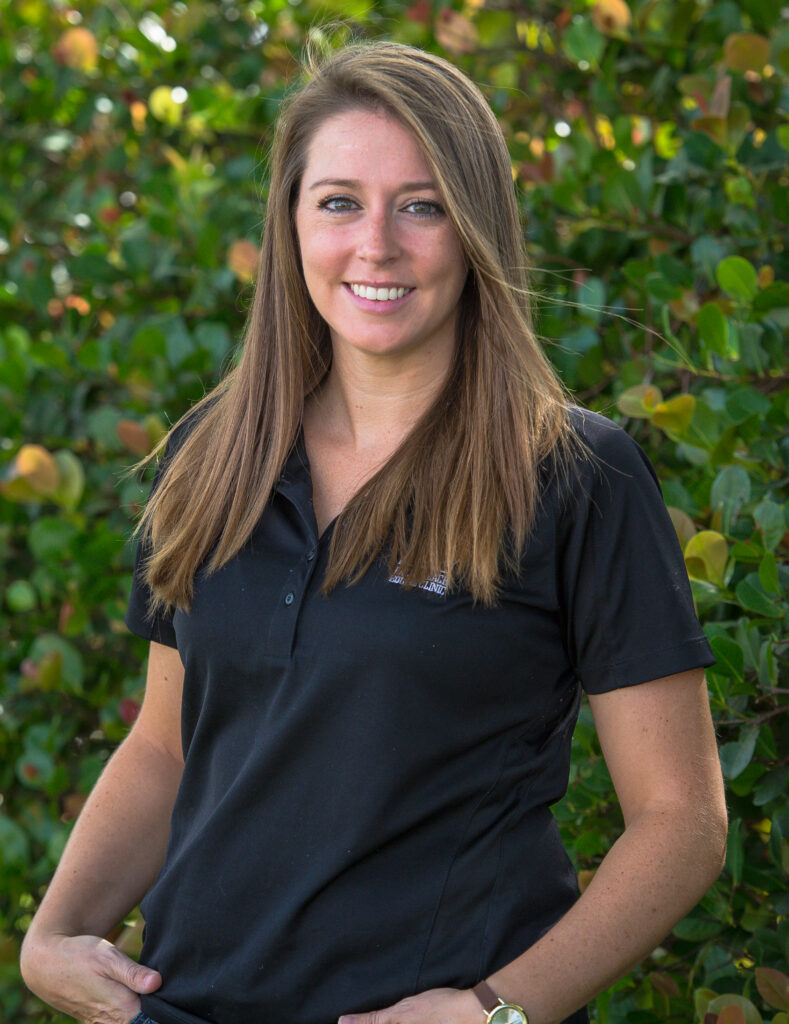Tag: smith
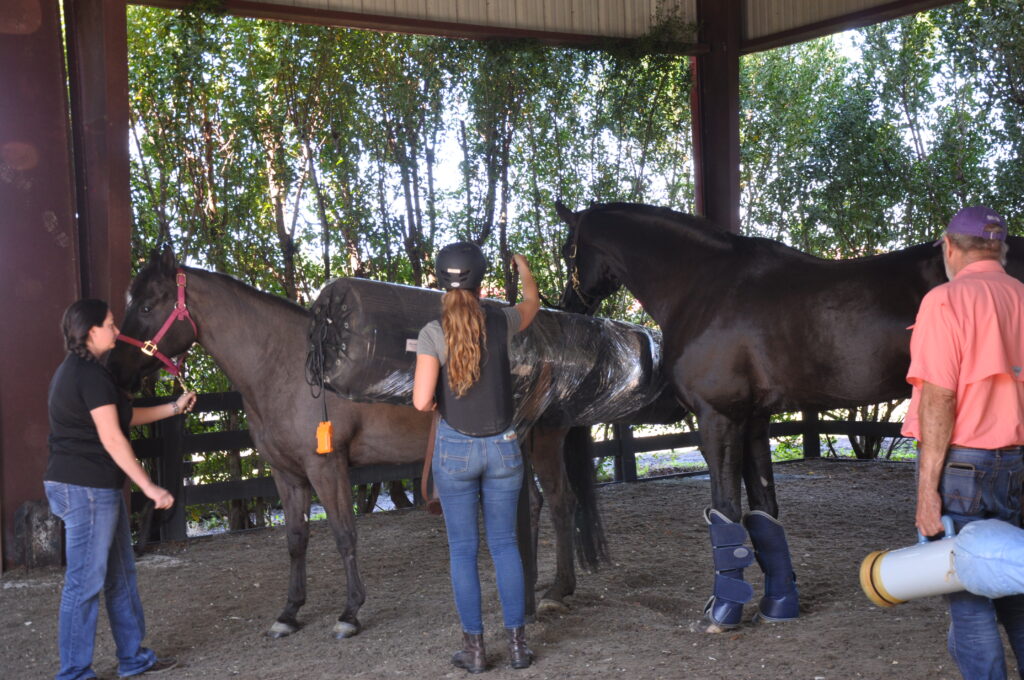
While the traditional breeding process needs no explanation, there are multiple avenues available when it comes to producing a foal. It is important to understand your horse’s reproductive options before starting the breeding process, such as the different conception rates between fresh-cooled and frozen semen or how to guarantee a live foal out of your breeding contract. Palm Beach Equine Clinic veterinarian Dr. Katie Atwood previously guided us through what to expect regarding the mare’s side of this equation, and below she explains several considerations for the stallion’s side.
Start with the Future Foal’s Purpose
When selecting a stallion for semen purchase, the first step is to assess what will be the foal’s purpose and projected goals. Many mare owners will recognize certain weaknesses in their horse and choose a stallion that could compensate for those shortcomings to create the ideal foal. For example, if the mare doesn’t have the scope they would like to have in the foal, an owner might choose a particularly scopey* stallion. Chances are in favor of two talented horses creating a talented foal. However, Dr. Atwood stresses that it is impossible to guarantee that a certain mare and stallion combination will produce the desired result.
“In breeding thoroughbred racehorses, we see a lot of examples of this,” explains Dr. Atwood. “Some owners will repetitively breed a racing stallion but none of his foals will accomplish anything close in comparison to his accolades. You can’t always predict what will come out of the breeding match.”
Still, Dr. Atwood makes a point of impressing upon her clients the importance of first knowing what they want for the foal’s future. Then, consider the health, genetic makeup, and bloodlines of the parents-to-be.

“There are a few genetic diseases that are little known and currently being more researched, such as Warmblood Fragile Foal Syndrome and Hyperkalemic Periodic Paralysis. Testing for these diseases is becoming more common. There are also hereditary traits such as cryptorchidism or conformational issues which are genetically predisposed. Conformational traits can be a factor, so it’s important to take these into consideration when choosing the stallion,” says Dr. Atwood.
Minimizing Risk Through a Breeding Contract
“It is important to have a solid breeding contract in place,” Dr. Atwood recommends. “A detailed agreement gives the owner of the mare specific guidelines as to what they are entitled to receive.”

Every breeding contract is slightly different, so you need to read yours carefully and ask questions. The breeding contract should outline the fees, rebreeding rights, the method of breeding, and the number of doses of semen. Some contracts include a live foal guarantee, which means that you will receive doses of semen until your mare produces a foal that stands and nurses.
Depending on the stallion and his semen availability, you may have a certain number of breedings, or rounds of semen shipments, per breeding season outlined in the contract. The contract, however, can be amended and Dr. Atwood finds this is a common practice because of the unforeseen possibilities that accompany reproduction.
“It can be extremely variable, but many stallion owners, depending on the demand for that stallion and his availability, are flexible,” she notes. “So, if you have an issue with breeding your mare, it’s worthwhile to ask the stallion’s owner to amend the contract. For example, if it is late in the breeding season and the mare’s owner chooses not to continue breeding that season but would like to try the next season, a lot of times the stallion’s owner will agree to extend the contract to the following year for a fee.”
The Stallion’s Breeding Options
You can breed your horse through live cover, artificial insemination with fresh semen, fresh-cooled semen, or frozen semen. The success of any breeding method resulting in a pregnancy is extremely dependent on the mare and stallion and their management. The mare’s age, her prior number of pregnancies, and reproductive health are crucial, as well as the stallion’s fertility, the number of mares he is booked to, and the handling and processing of his semen. Artificial insemination with fresh-cooled or frozen semen is now the norm in sport horse breeding as there are fewer risks and logistical challenges.
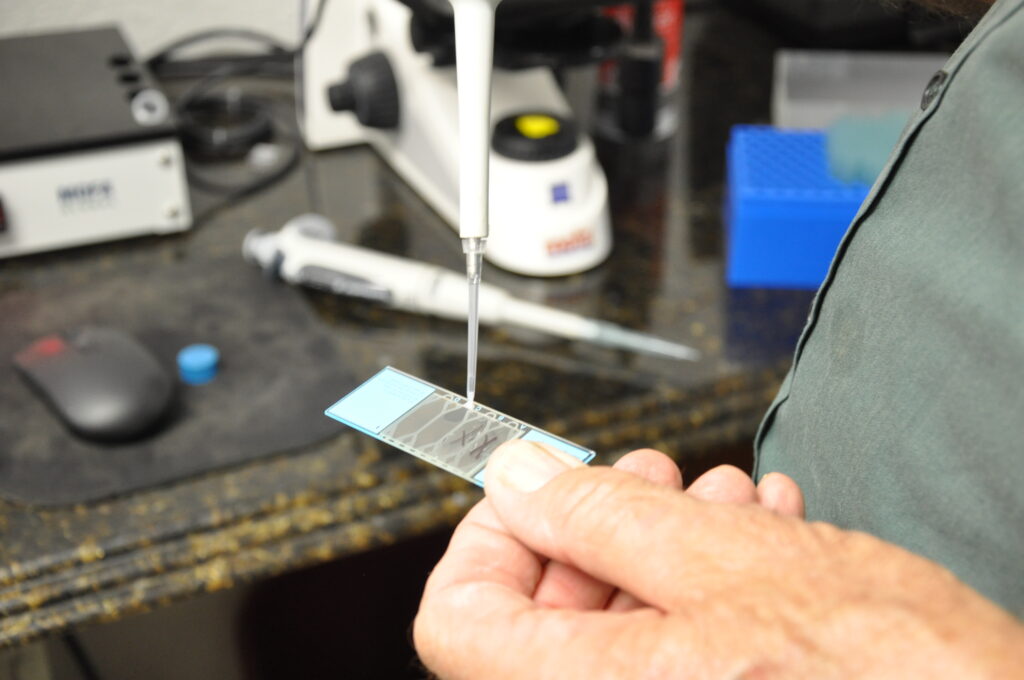
“The beauty of frozen semen is that it lasts forever,” Dr. Atwood says. “Once frozen and appropriately maintained, it is, in theory, good forever. The interesting part is that this can help diversify bloodlines. Sport horses have evolved a lot over the last several decades, and the traits we look for in a horse have evolved as well. There are qualities that we may have overlooked in certain breeds or disciplines because of trends or preferences at that time. With frozen semen, you can go back to a stallion frozen years ago who may be a great option for your mare.”
Not all stallions’ semen can be frozen successfully as some are unable to thaw and still produce a pregnancy. Another option Dr. Atwood recommends is fresh cooled semen, which is often a good choice when breeding an older mare.
“I’ve had instances with mares that couldn’t get pregnant with the owner’s first choice in frozen semen. In that case, I do recommend going with a different stallion or fresh-cooled if available. Fresh-cooled semen is a great option because the sperm is healthier in theory; they are younger, and their motility is usually better.”
What’s Involved in Breeding with Fresh or Frozen Semen
Many veterinarians process, freeze, and package their breeding doses differently, but with the same goal of providing enough to ensure a pregnancy. Industry experts recommend one billion progressively motile sperm per breeding dose. Realistically, half of the sperm will be dead upon arrival and the resulting 500 million progressively motile sperm is found to be an appropriate amount.

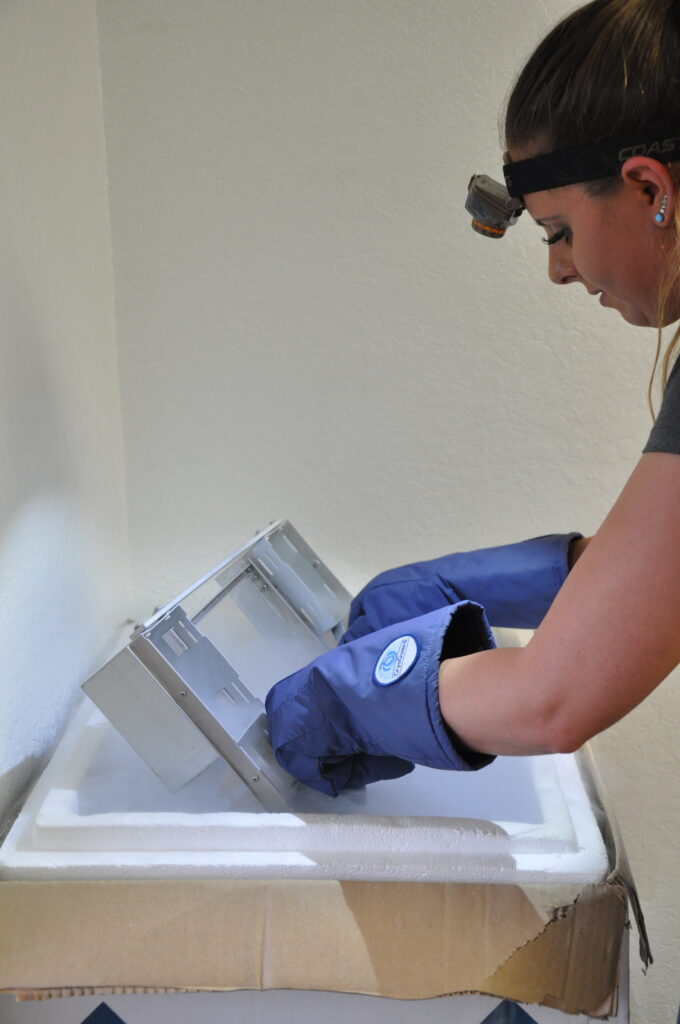
“A lot of people say, ‘you only need one sperm’ to which the answer is yes, in theory, you only need one sperm, but you still need the rest of them to push that one sperm along,” explained Dr. Atwood. “You can’t just put a single sperm in a uterus and expect to get a foal. It just doesn’t work that way because you need a higher volume to build momentum and get that one sperm where it needs to go to form an embryo.”
With fresh-cooled semen, Dr. Atwood checks the mare to see if she is ready to be bred and if so, she schedules the stallion to be collected the next day. With the collection, she utilizes a Computer Assisted Sperm Analyzer (CASA) to assess certain parameters of the stallion’s fertility and then uses a cooling extender agent to preserve the quality of the sperm. The mare can be bred and then checked 24 hours later.
If freezing the semen, Dr. Atwood will process and analyze the sperm, also use an extending agent, and then a cryoprotectant to prevent damage to the sperm during the freeze. She packages the sperm into four to eight half-millimeter straws per breeding dose. Then the semen is placed on a rack and cooled in a temperature-adjustable fridge to prevent damage or sudden shock before freezing. The straws can then be placed into a vapor box for about 20 minutes before being submerged in a liquid nitrogen tank and stored indefinitely. When using frozen semen, once the mare is close to ovulating, she is given an ovulatory agent to help the process begin within 36-48 hours.

If you’re considering breeding your horse, having a knowledgeable veterinary partner on your team will help streamline the breeding process. They will be able to address any questions or concerns about your individual mare and stallion combination, and maximize your chances of producing a healthy foal. Speak with a veterinarian about your horse’s breeding options by calling Palm Beach Equine Clinic at 561-793-1599 or visit www.equineclinic.com/reproduction-and-fertility.
*A horse that jumps with little effort and great power is thought to have scope and considered to be scopey.
Breeding the Modern Way
Palm Beach Equine Clinic’s Own Dr. Katie Atwood Discusses a 21st Century Take on Equine Reproduction
The process of breeding sport horses is ever-changing. Whether in an effort to produce the healthiest, most talented foals, to prolong the competition career of a mare, or make the most of a stallion’s longevity, reproductive science in horses has come a long way from the days of the traditional breeding shed.
Dr. Katie Atwood joined Palm Beach Equine Clinic, based in Wellington, FL, in June and brought her passion for reproductive work with her to the winter equestrian capital of the world.
“I like the creating of life,” said Dr. Atwood, who is a Florida native and University of Florida graduate and currently pursuing steps to become a board-certified reproductive specialist. “Equine medicine is intriguing, but you’re dealing with sick, unhealthy animals. With reproduction, I am working with healthy animals and making their babies, which I love!”
Embryo Transfer
The most popular wave of advancement that has hit the horse sport industry over the past several years is the process of embryo transfer.
How it works:
- A donor mare and stallion, who hold the genetics of the future foal, are bred.
- At seven or eight days of pregnancy, the embryo is flushed out.
- A catheter is placed through the vagina and cervix, and an inflatable cuff on the catheter provides a fluid-tight seal.
- A lavage fluid with surfactin (added to reduce the “stickiness” of the embryo and allow it to be extracted easily) passes down through a tubing system into the uterine lumen. As the fluid swirls throughout the lumen and drains back out through gravity, it collects the embryo, which is swept back out. The fluid and embryo pass out through the tubing system into and through an embryonic filter.
- When the embryo is identified under microscope, it is removed into a more enriched medium until the time of transfer.
- The embryo is shipped to a recipient farm where a young and healthy surrogate mare of decent size receives the embryo. That mare carries the foal to term, but it is genetically created from the donor mare and stallion.
While the process is fascinating, some may wonder why it’s necessary. According to Dr. Atwood, it relieves much of the concern owners have about breeding their sport horse mares.
“The gestation period for a horse is 11 months, so you’re only getting one foal per year when you breed traditionally,” she said. “This allows a mare to produce multiple foals per year, but it also allows that mare to remain in competition. This process can be done on younger mares with no interruptions to their competition and training schedules.”
Horses are now being bred at an ideal reproductive age while they are still in training, which is made even more valuable by the fact that advances in equine science has prolonged the longevity of horses. While 16 or 17 was once the age of an older horse, now it’s commonly seen as the age when horses are winning in the show ring. Thanks to embryo transfer, these horses can enjoy longer, healthy careers and still produce the talent of the future.
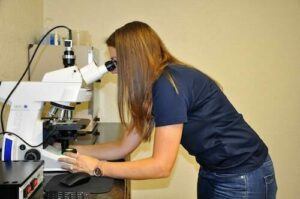
Dr. Atwood has seen embryo transfers become popular in dressage and polo, but she has begun to see it span all disciplines, saying, “At the start of the season, I had one farm and a few mares, but now it has quickly grown to several farms with multiple mares at each. It is really taking off because people now realize it does not remove their mares from competition.”
The process not only keeps mares competing, but it allows stallions to cross continents. Frozen fertilized embryos from working polo ponies in the U.S. are now being shipped to Argentina where they are carried by mares and then trained by some of the best polo trainers in the world. On the flip side, semen can also be frozen and shipped to the U.S.
“Stallions are collected, the semen is placed with an extender and high nutrient base so the sperm has something to use for energy, and then cooled slowly until it is frozen in liquid nitrogen,” said Dr. Atwood. “Once frozen, it is theoretically good forever. Last year, I bred a mare with 1991 semen and she was successfully pregnant!”
What’s Next at Palm Beach Equine Clinic
Palm Beach Equine Clinic underwent significant facility renovations over the last year, which included improvements to their onsite breeding shed. Now covered from the heat and inclement weather like an indoor arena, the shed boasts a hydraulic phantom mare.
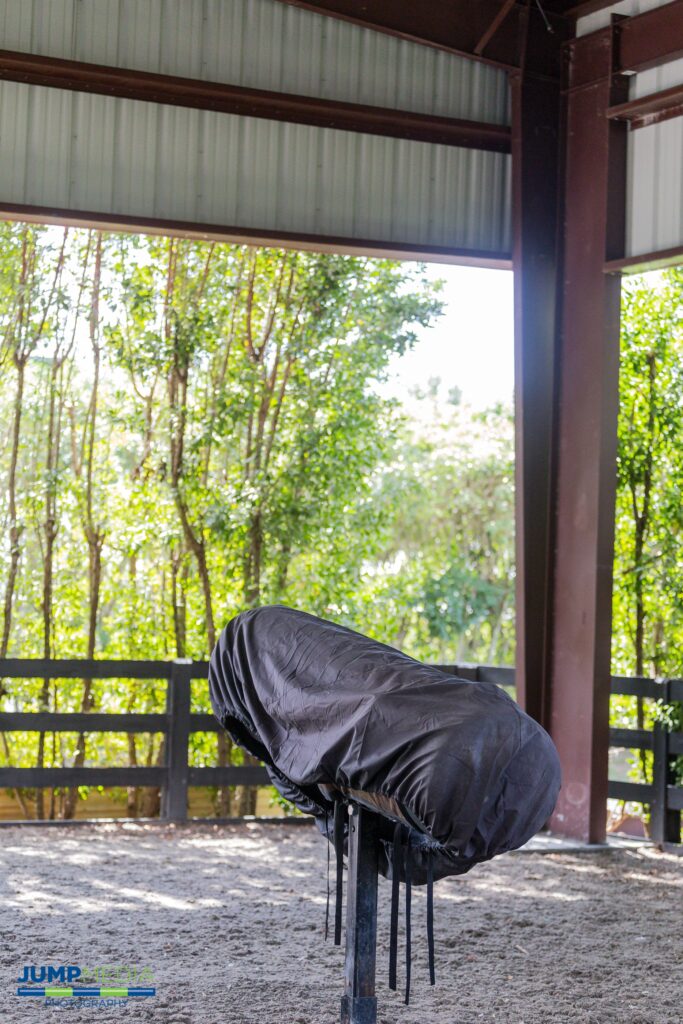
“We can raise a lower our phantom with the push of a button so it can be the appropriate for the stallion,” said Dr. Atwood. “Previously, we had to bring a tractor in to raise and lower the phantom.”
Additionally, Palm Beach Equine Clinic recently incorporated the use of a SCA® CASA (computer assisted sperm analyzer) system into their reproduction work. An excellent way to improve quality control of a stallion’s sperm, the system evaluates sperm motility (velocity and type of movement), concentration (sperm count), morphology (sperm shape), DNA fragmentation (counting of fragmented sperm), vitality (live and dead count) and acrosome reaction, which is what ultimately allows the sperm to penetrate the egg.
From onsite experience to computer technology, Palm Beach Equine Clinic offers Dr. Atwood the opportunity to be at the forefront of equine reproduction, a place she has always strived to be.
“I wanted to come into a practice that had a developed program in place, but what is even more important to me is mentoring and teaching my technicians and clients about reproduction,” she said. “It is so important to make sure these techniques are shared and promoted for the continued success of veterinarians, owners, and most of all horses.”
